Noni Identification and Uses
Common Name(s): Noni, Cheese Fruit, Indian Mulberry
Latin Name: Morinda citrifolia
Plant Family: Rubiaceae
Size: Usually 15-30 feet. Often pruned.
Edible: Yes
Medicinal: Yes
Where Found: Coastal areas, forest, dooryards
Flowering Time: Year-round
Blooms: Inconspicuous, white
Fruit: Year-round
Native: No
Uses: Fruit edible, leaves for tea
Noni Identification and Description:
Noni identification is easy as the tree is hard to miss, even though it’s often tucked in amidst the jungle. Its luxuriant green leaves and distinctive fruits make it a beautiful addition to the garden or landscape.
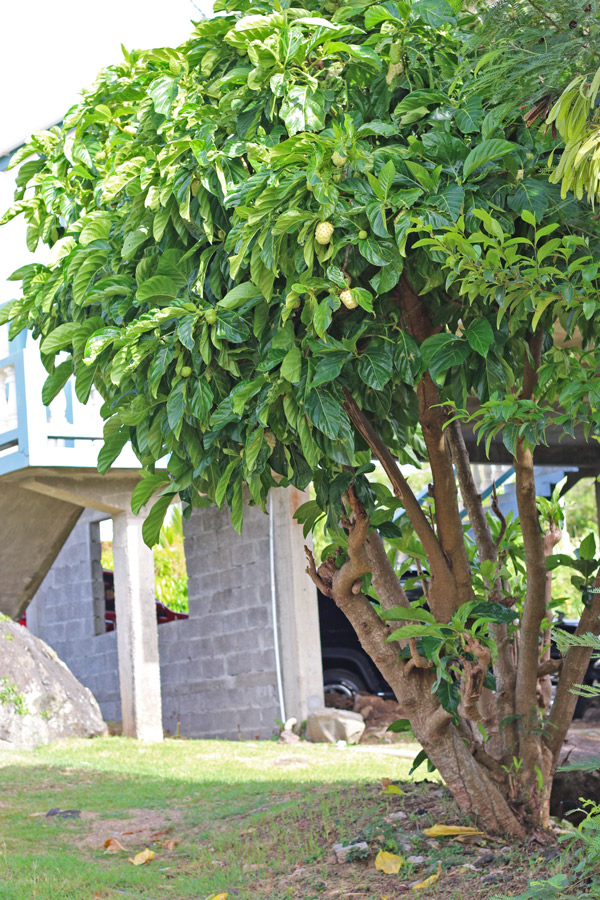
The fruit is green when immature, ripening to white and finally to a pale grey-white semi-translucent state.
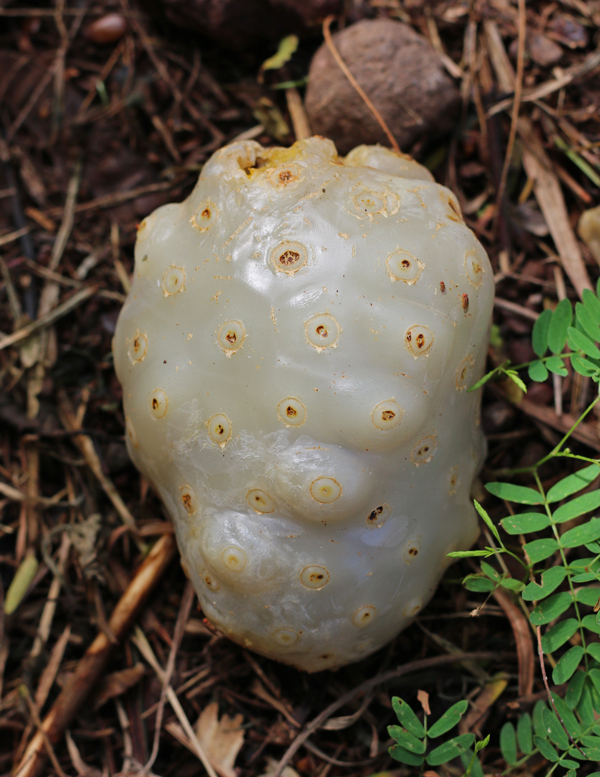
Though often described as bitter, the seedy fruit is more peppery than bitter, with a strong aroma many find unpleasant. The flavor tastes like a combination of black pepper and limburger cheese. The fruit is invigorating and makes the tongue tingle.
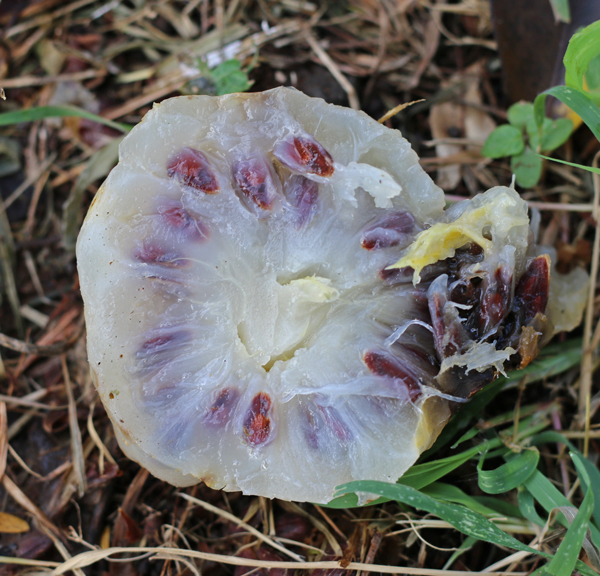
Juices and extracts are common herbal supplements. A common method for extracting the juice is to put fresh fruit in a sealed jar in the sun to ferment. The resulting liqueur is taken as a tonic. The leaves do not smell unpleasant and make a pleasantly earthy herbal tea when steeped in boiling water.
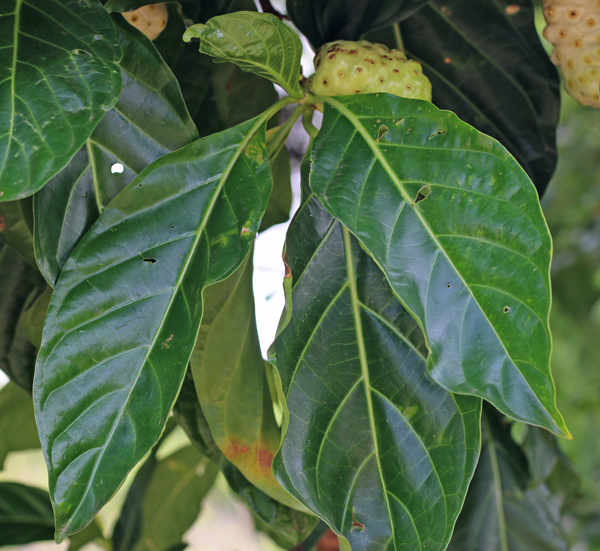
The list of medical uses for noni stretch into the unbelievable, with it being listed as an aid for diabetes, liver disease, cancer, infections, migraines, smallpox, joint problems, arthritis and many more ailments. It also helps relieve pain and is high in potassium, with a long history of medical use. It is also a relative of coffee, making it dear to this author’s heart. The tree can be spotted along shorelines and planted in yards in tropical regions.
Propagation and Culture
Noni can be grown from seeds or cuttings and produces fruit rapidly. From seed, it can fruit in under two years. Keep cuttings moist and treat with rooting hormone. Semi-hardwood twigs rooted for me at about a 25% strike rate. Seeds take some time to germinate, but seedlings can sometimes be found near mature trees. Noni is easy to grow even in poor conditions. It is tolerant of drought, salt and rocky soils, still producing rich green growth even when abused. The fruit is compound, forming after a succession of blooms.
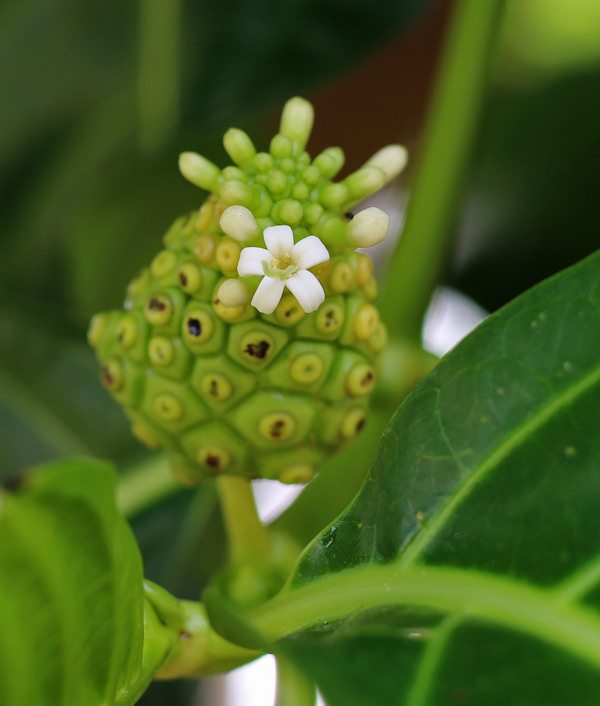
The tree is also tolerant of severe pruning and can be cut back and kept small for easier care and harvesting. Once established, noni trees will thrive on just rainfall and bear fruit year-round.
All pictures and content copyright 2018 by David The Good.


6 comments
DtG, once again, thank you for the in-depth information on many of the not-too-often grown fruit and vegetables.
Could you tell us where you find/found some of the plant seeds you use? Do/did you get them mainly online, or did you travel to the S. Florida nurseries/fruit stands to find them?
Thanks!
Yeah, it’s a hunt. But here is a good start: http://www.thesurvivalgardener.com/how-to-find-rare-edible-plants/
I like the idea and hope to see more. Most of the various other websites I use to get plant information are usually lacking in high quality images, which makes identification harder. This is a good assortment of images that would make ID simple. I was thinking about planting Noni until I saw Weird Explorer do his tasting of it, but you’ve turned me back onto the idea.
Noni is definitely worth planting. It’s worth it just so you can offer the fruit to people.
And thank you for the kind words. I have a good camera and am working to get plenty of pictures. Lack of good images for plant ID has bothered me in the past.
Thanks so much!
some of the best content and info on plants around the internet, thanks Mr. David The Good
Comments are closed.